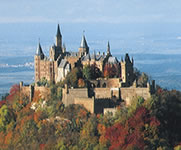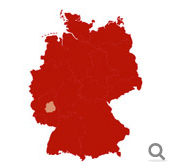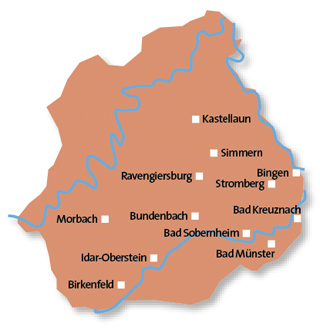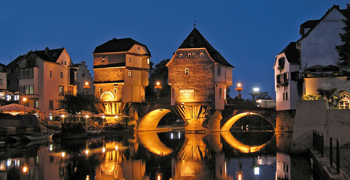
Historical Towns
- Historical towns in Brandenburg
- Cathedral Towns and Cities in Saxony-Anhalt
- The innovative Anhalt-Wittenberg Region
- Enchanting towns in the Harz
- The beautiful towns and cities in Saxony
- Towns and cities of culture in Thuringia
- Beautiful towns of Franconia
- East Bavarian traditional towns
- Alpine towns in the Allg�u
- The eastern Akpine Foothills and their towns
- Towns and villages in the western foothills of the Alps
- Mediterranean towns on Lake Constance
- Towns in the Swabian Alb
- Unspoilt towns in the Black Forest
- Towns for refined tastes in the Heilbronner Land
- Towns in the Odenwald
- Wine towns in Rheinhessen
- Saarland, a region of contrasts
- Romantic towns in the Hunsr�ck and Nahe Regions
- Idyllic towns and villages in the Moselle Region
- The Ahr Rhine Eifel holiday region
- Wine towns on the Romantic Rhine
- Modern towns and cities in the Bergisches Land Region
- The Lahn Valley and its fairytale towns
- Historical towns in Kurhessisches Bergland
- Sauerland's scenic towns
- Fairytale towns in the Weserbergland Hills
- Majestic towns in the M�nsterland Region
- The nine stars of Lower Saxony
- North and East Frisian Islands
- Vibrant Schleswig-Holstein
- Maritime towns along Mecklenburg's Baltic Coast
- Historical Hanseatic Towns
- Germany's Baltic Sea Islands
- The Mecklenburg Lakes
Contact and information
Wine tip
The Nahe region
The history of wine-growing along the Nahe river goes back around two thousand years. Mild temperatures, lots of sunshine and low rainfall provide the ideal conditions for cultivating grapes such as rivaner and silvaner. Pinot varieties, kerner, scheurebe and portugieser are also grown here, but the richly nuanced riesling is the growers' darling.
The history of wine-growing along the Nahe river goes back around two thousand years. Mild temperatures, lots of sunshine and low rainfall provide the ideal conditions for cultivating grapes such as rivaner and silvaner. Pinot varieties, kerner, scheurebe and portugieser are also grown here, but the richly nuanced riesling is the growers' darling.
Legendary highwaymen and gemstones. A rich vein of German history

Ravengiersburg
The history of Ravengiersburg is inextricably linked with that of the abbey which shares its name. Ravengiersburg Abbey was built in the 10th century on a steep hillside above the Simmerbach river. Its main feature is the Romanesque twin-steeple church of St. Christopher, known as the Hunsrück cathedral. Now a popular venue for weddings, it was originally founded as an Augustine canon seminary in 1074, before becoming a Catholic parish church in 1699. In a historical deed of gift for estates handed over to the abbey, the Hunsrück was mentioned for the first time as Hunsruche.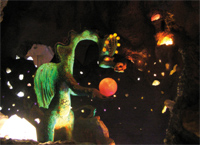
Bad Kreuznach
Here, in 1958, Germany and France finally drew a line under centuries of hostility. The French President Charles de Gaulle and the West German Chancellor Konrad Adenauer met at the town's spa assembly rooms to rebuild the relationship between their two countries. This led to the Treaty of Élysée in 1963 and marked a new chapter for modernday Europe. Bad Kreuznach is assured a place in history as the setting for this major political summit but there is much more to admire about the pretty little town. Things to look out for include its warren of narrow lanes, the medieval houses that stand on the old Nahe bridge from 1300, the `Little Venice' at the mouth of the Ellerbach river, Kauzenburg Castle, a Roman hall and St. Paul's Church.Stromberg
Every year, Stromberg holds a medieval town festival in honour of its most famous son: Michel, the national personification of Germany in the mould of John Bull and Uncle Sam. Michel is an ambivalent figure, of great stature yet down to earth. Stromberg is considered the home of Michel. Here, people see the courageous General Hans Michael Elias von Obentraut who fought on the side of the Protestant Union in the Thirty Years' War as the embodiment of the famous character. At the Michel Festival in Stromberg, knights do battle and there is entertainment from minstrels, artisans and strolling players.Kastellaun Castle
Kastellaun Castle originally belonged to the Counts of Sponheim, whose territories extended from the Rhine to the Moselle and Nahe rivers and incorporated the eastern part of the Hunsrück hills. The original castle probably dates back to the 13th century. It was then rebuilt after being destroyed in 1689 during the Palatinate war of succession. The Portal of History opened at Kastellaun Castle in 2006. Exhibitions on three floors chart the history of Kastellaun and the local area from Celtic and Roman times to the Cold War era.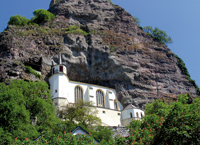
The jewel of the Nahe
Home of the German Gemstone Museum and Europe's only gemstone mine open for public viewing, Idar-Oberstein can rightly call itself Germany's gemstone capital. It is also the starting point of the German Gemstone Route, a treasure trove of natural beauty which links numerous small operators specialised in the polishing and cutting of precious stones. The exhibition at Fischbach copper mine offers an insight into how copper was mined in the olden days.The story of Schinderhannes
The low-born Johannes Bückler, under the guise of Schinderhannes, brought terror to the Hunsrück forests in the late 18th century. In 1803, the legendary outlaw was sentenced to death and executed in Mainz. Tales of Schinderhannes' notorious life are still recounted today. The Schinderhannes Tower in Simmern town centre can be climbed right to the top.German food with a Brazilian twist
An established element of the culinary and cultural traditions in Idar-Oberstein and the surrounding region, spiessbraten pork steaks are the subject of the largest public festival on the Upper Nahe, the Spiessbratenfest. The skewered meat is grilled over an open fire in a tradition that travelled all the way from Brazil. Gemcutters from the region voyaged to South America in the 18th century. When they transported their gemstones back to Germany, they also brought a wealth of new knowledge including how to cook meat on a spit.Travel Planner
Select an option...
Romance and charm
Looking for a place to stay? Liller's Historische Schlossmühle in Horbruch in the Hunsrück region is the perfect home from home with a charming, romantic feel throughout the hotel, places to relax and a gourmet restaurant.
Food and drink
On the doorstep of the Nahe wine region and at the foothills of the Soonwald forest, celebrity chef Johann Lafers offers high-end cuisine for all the senses at Bistro d'Or and Le Val d'Or, his two restaurants at Castle Stromburg.
History and tradition
The two film series Heimat A German Chronicle and The Second Heimat Chronicle of a Youth are regarded as milestones in German and international film-making history. Settings used in the films attract visitors to the Hunsrück to this day.
Nature and scenery
Walking at its best on quality-certified routes: either on the 184km Saar-Hunsrück Trail, which runs from Mettlach or Trier to the gemstone town of Idar-Oberstein, or on the 83km Soonwaldsteig between Kirn on the River Nahe and Bingen on the Rhine.




